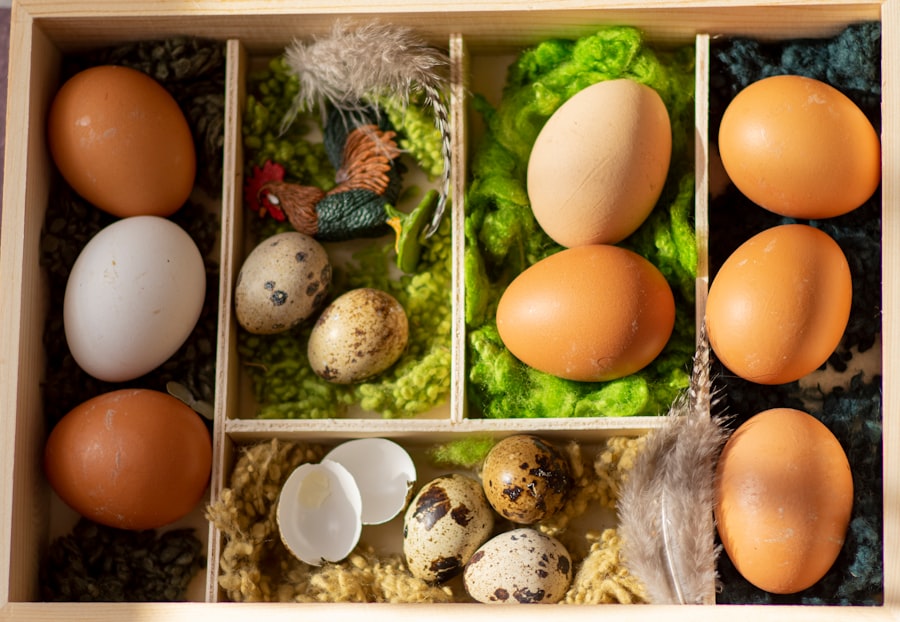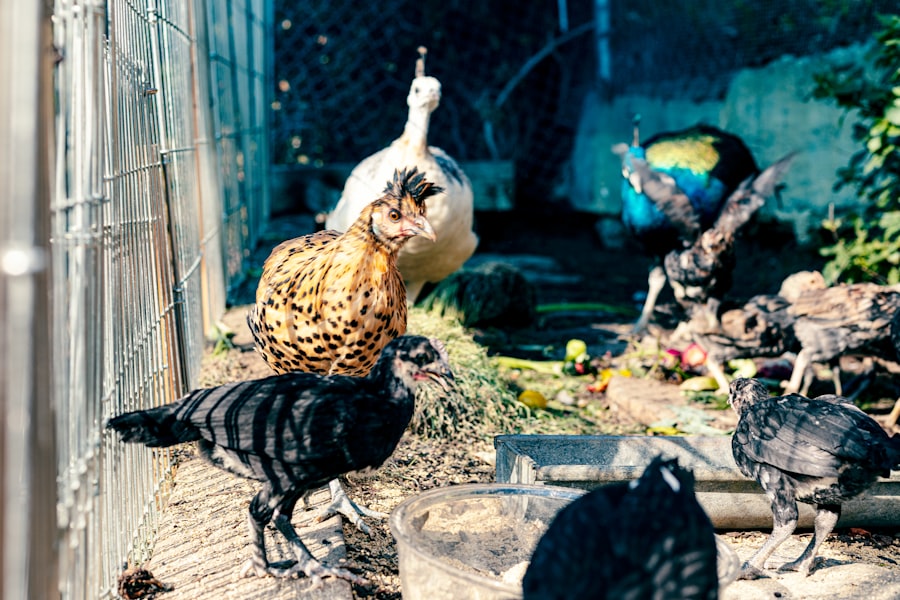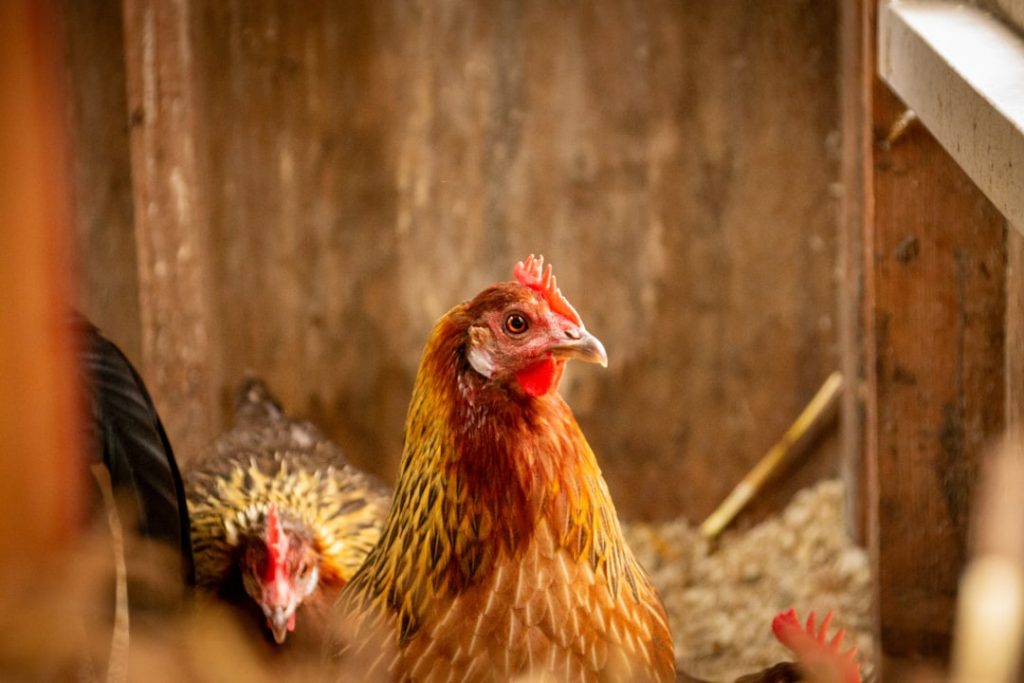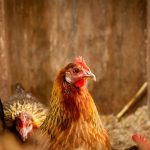Inbreeding in chickens occurs when closely related birds are mated, such as siblings or parents with offspring. While this practice can be used to establish specific traits within a flock, it carries significant risks. The primary concern is the increased probability of genetic defects and health issues in the resulting offspring.
This is due to the higher likelihood of harmful recessive genes being expressed when closely related birds breed. These genetic defects can manifest as reduced fertility, lower hatch rates, and increased disease susceptibility. Inbreeding can also lead to decreased genetic diversity within the flock, making the birds more vulnerable to environmental changes and disease outbreaks.
Additionally, it may result in reduced overall vigor and productivity. Chickens bred from a limited gene pool may experience decreased fitness and resilience, leading to slower growth rates, reduced egg production, and lower overall quality. Inbreeding depression, which refers to the reduction in fitness and vitality due to inbreeding, can have long-term negative effects on flock health and productivity.
It is crucial for chicken breeders to understand these risks and implement strategies to mitigate the negative consequences of inbreeding in their flocks.
Table of Contents
Key Takeaways
- Inbreeding in chickens can lead to genetic defects and health issues
- Implementing a rotation system for roosters can help prevent inbreeding and maintain genetic diversity
- Introducing new bloodlines to the flock can improve overall genetic health and diversity
- Keeping detailed records of lineage is crucial for tracking and managing breeding practices
- Utilizing genetic testing can help identify and prevent inbreeding in chicken flocks
- Monitoring breeding pairs closely can help prevent accidental inbreeding and maintain genetic diversity
- Seeking professional advice for breeding practices can provide valuable insights and guidance for maintaining a healthy and diverse chicken flock
Implementing a Rotation System for Roosters
Implementing a Rooster Rotation System to Minimize Inbreeding Risks
Maintaining Genetic Diversity
One effective way to minimize the risks of inbreeding in a chicken flock is to implement a rotation system for roosters. This involves periodically introducing new roosters into the flock to prevent excessive inbreeding. By rotating roosters, breeders can help maintain genetic diversity within the flock and reduce the likelihood of harmful recessive genes being expressed.
Improving Flock Vigor and Productivity
Additionally, introducing new roosters can help improve overall vigor and productivity in the flock by bringing in new genetic traits and characteristics. When implementing a rotation system for roosters, it’s important to carefully select new birds that are not closely related to the existing flock. This can help ensure that new genetic material is introduced into the flock, while also minimizing the risks of inbreeding.
Selecting Compatible and Healthy Roosters
Breeders should also pay attention to the compatibility of new roosters with existing hens, as well as their overall health and vitality. By regularly rotating roosters and carefully selecting new birds, breeders can help maintain a healthy and genetically diverse flock.
Introducing New Bloodlines to the Flock

In addition to implementing a rotation system for roosters, another effective strategy for minimizing the risks of inbreeding in chickens is to introduce new bloodlines to the flock. This involves bringing in birds from outside sources that are not closely related to the existing flock. By introducing new bloodlines, breeders can help increase genetic diversity within the flock and reduce the likelihood of harmful recessive genes being expressed.
This can lead to healthier, more vigorous birds with improved overall productivity. When introducing new bloodlines to the flock, it’s important to carefully select birds that are genetically distinct from the existing flock. Breeders should look for birds with desirable traits and characteristics that complement the existing genetics of the flock.
Additionally, it’s important to quarantine and test new birds for diseases before introducing them to the flock to prevent the spread of illness. By regularly introducing new bloodlines into the flock, breeders can help maintain genetic diversity and minimize the negative effects of inbreeding.
Keeping Detailed Records of Lineage
One essential practice for minimizing the risks of inbreeding in chicken flocks is to keep detailed records of lineage. By maintaining accurate records of each bird’s ancestry, breeders can track genetic relationships within the flock and make informed breeding decisions. This can help prevent accidental inbreeding and ensure that birds are bred from genetically diverse lineages.
Detailed records of lineage can also help breeders identify potential genetic issues within the flock and make proactive decisions to maintain overall genetic health. When keeping records of lineage, breeders should include information such as parentage, hatch dates, and any relevant genetic traits or characteristics. This information can be used to track genetic diversity within the flock and make informed decisions about breeding pairs.
Additionally, detailed records can be valuable for future breeding efforts and can help maintain the overall health and productivity of the flock. By keeping detailed records of lineage, breeders can help minimize the risks of inbreeding and maintain a healthy, genetically diverse flock.
Utilizing Genetic Testing for Inbreeding
Another valuable tool for minimizing the risks of inbreeding in chicken flocks is genetic testing. By utilizing genetic testing, breeders can identify potential genetic issues within the flock and make informed breeding decisions. Genetic testing can help identify carriers of harmful recessive genes and prevent accidental inbreeding.
Additionally, genetic testing can provide valuable information about individual bird’s genetic diversity and overall health. There are several types of genetic testing that can be used to assess the genetic health of a chicken flock. DNA testing can be used to identify specific genetic traits or characteristics within individual birds, while genotyping can provide information about overall genetic diversity within the flock.
By utilizing genetic testing, breeders can make informed decisions about breeding pairs and ensure that birds are bred from genetically diverse lineages. This can help minimize the risks of inbreeding and maintain a healthy, productive flock.
Monitoring Breeding Pairs Closely

Minimizing the Risks of Inbreeding
In addition to keeping detailed records of lineage and utilizing genetic testing, it’s essential for breeders to closely monitor breeding pairs to minimize the risks of inbreeding. By doing so, breeders can ensure that birds are not being bred from closely related lineages and prevent accidental inbreeding. This helps maintain genetic diversity within the flock and reduces the likelihood of harmful recessive genes being expressed.
Key Factors to Consider
When monitoring breeding pairs, breeders should pay attention to each bird’s lineage and genetic background. It’s crucial to avoid breeding birds that are closely related or have known genetic issues. Additionally, breeders should observe breeding behavior and fertility rates to ensure that pairs are producing healthy offspring.
Making Informed Breeding Decisions
By closely monitoring breeding pairs, breeders can make informed decisions about which birds to breed together and help maintain a healthy, genetically diverse flock. This approach enables breeders to create a strong and resilient flock, reducing the risk of genetic disorders and promoting the overall well-being of the birds.
Seeking Professional Advice for Breeding Practices
Finally, one of the most important steps breeders can take to minimize the risks of inbreeding in chicken flocks is to seek professional advice for breeding practices. Professional poultry geneticists or veterinarians can provide valuable guidance on maintaining genetic diversity within a flock and minimizing the negative effects of inbreeding. They can offer insights into best practices for breeding, as well as provide recommendations for genetic testing and maintaining detailed records of lineage.
Professional advice can also be valuable for identifying potential genetic issues within a flock and making informed decisions about breeding pairs. By seeking professional advice, breeders can access expert knowledge and resources to help maintain a healthy, genetically diverse flock. This can ultimately lead to improved overall productivity and vitality within the flock.
In conclusion, minimizing the risks of inbreeding in chicken flocks is essential for maintaining overall genetic health and productivity. By understanding the risks of inbreeding, implementing rotation systems for roosters, introducing new bloodlines, keeping detailed records of lineage, utilizing genetic testing, monitoring breeding pairs closely, and seeking professional advice for breeding practices, breeders can help maintain healthy, genetically diverse flocks that are resilient and productive for generations to come.
If you’re looking for tips on how to keep chickens from inbreeding, you might also be interested in learning how to care for goslings. This article provides valuable information on raising and caring for goslings, which can be helpful for poultry enthusiasts looking to expand their flock and avoid inbreeding.
FAQs
What is inbreeding in chickens?
Inbreeding in chickens occurs when closely related chickens, such as siblings or parent-offspring, are bred together. This can lead to a decrease in genetic diversity and an increase in the expression of harmful genetic traits.
Why is inbreeding a concern in chicken breeding?
Inbreeding can lead to a decrease in overall health and productivity of the chicken flock. It can result in higher rates of genetic abnormalities, reduced fertility, and lower resistance to diseases.
How can you prevent inbreeding in chickens?
To prevent inbreeding in chickens, breeders can use a breeding program that involves rotating males and females, introducing new bloodlines, and keeping detailed records of the birds’ lineage. Additionally, breeders can use genetic testing to identify potential carriers of harmful genetic traits.
What are the potential consequences of inbreeding in chickens?
The potential consequences of inbreeding in chickens include reduced fertility, increased susceptibility to diseases, higher rates of genetic abnormalities, and a decrease in overall productivity and performance of the flock.
What are the benefits of preventing inbreeding in chickens?
Preventing inbreeding in chickens can help maintain genetic diversity, improve overall flock health and productivity, and reduce the risk of passing on harmful genetic traits to future generations.

Meet Walter, the feathered-friend fanatic of Florida! Nestled in the sunshine state, Walter struts through life with his feathered companions, clucking his way to happiness. With a coop that’s fancier than a five-star hotel, he’s the Don Juan of the chicken world. When he’s not teaching his hens to do the cha-cha, you’ll find him in a heated debate with his prized rooster, Sir Clucks-a-Lot. Walter’s poultry passion is no yolk; he’s the sunny-side-up guy you never knew you needed in your flock of friends!


Meet Walter, the feathered-friend fanatic of Florida! Nestled in the sunshine state, Walter struts through life with his feathered companions, clucking his way to happiness. With a coop that’s fancier than a five-star hotel, he’s the Don Juan of the chicken world. When he’s not teaching his hens to do the cha-cha, you’ll find him in a heated debate with his prized rooster, Sir Clucks-a-Lot. Walter’s poultry passion is no yolk; he’s the sunny-side-up guy you never knew you needed in your flock of friends!








Great article. Generally, the process for ensuring diversity in breeding chickens is obvious but the implementation can get complicated. Though this article didn’t give me specific directions, it did make me feel more confident in building a process for my flock.
I started with 8 chickens and 2 roosters, all of the same breed, each from 3 different hatcheries. That will give me 3 different parents for certain and a reasonable likelihood of 6 different parental lineages. I will mix those up and swap them around every few months, eventually bringing my own hatched birds around to the mix with roosters not their father and, probably, not their uncle. It’s going to take a lot of spreadsheet or coding work to plan the whole thing.
Then when the mix gets too hard to isolate lines, I can order more roosters and put the old ones either out to pasture or in a stew pot – I don’t yet know how old roosters fare in the kitchen.
I think that, if I am able to keep the isolation going for a while, I will hopefully learn to be successful even if birds become unavailable from commercial hatcheries.
Thanks for sharing your own experience with implementing diversity in your chicken flock, Dale. It can definitely be a complicated process, but it’s so important for the health and sustainability of our feathered friends. It sounds like you’ve already got a great plan in place with multiple roosters from different hatcheries. And yes, keeping track of everything with spreadsheets or coding can be a bit overwhelming, but it’s so worth it in the long run. As for the old roosters, I’ve heard they can make for delicious meals, but it’s always good to do some research on the best cooking methods. Wishing you all the best with your flock and thanks for reading the article!